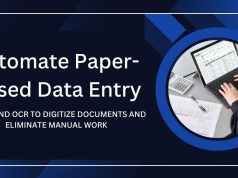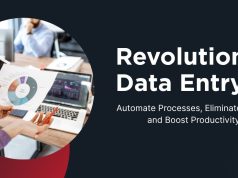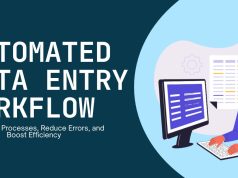Traffic noise modeling is essential for urban planning, environmental impact assessments, and noise mitigation strategies. However, the process often involves handling large volumes of data from various sources, making manual data entry tedious, time-consuming, and prone to errors. Automating data entry for traffic noise models can significantly enhance efficiency, accuracy, and analytical capabilities.
Understanding Traffic Noise Models and Their Data Requirements
Before diving into automation solutions, it’s important to understand what traffic noise models typically require. These models use mathematical algorithms to predict how noise propagates from roadways to surrounding areas, factoring in:
- Traffic volume and composition (percentage of heavy vehicles)
- Vehicle speeds and flow conditions
- Road surface characteristics and gradients
- Geographic and topographic information
- Building locations and heights
- Barriers and sound-reflecting surfaces
- Meteorological conditions
The complexity of these models creates data management challenges that experienced data automation specialists can help address through strategic implementation of appropriate tools and techniques.
Common Data Entry Challenges in Traffic Noise Modeling
Diverse Data Sources
Traffic noise modeling requires integrating data from multiple sources:
- Traffic counters and sensors
- GIS (Geographic Information System) databases
- Topographic surveys
- Building information models
- Weather stations
- Manual noise measurements
Each source often uses different formats, units, and data structures, creating integration difficulties.
Time-Series Data Management
Traffic patterns vary by time of day, day of week, and season. Managing these temporal variations requires sophisticated data handling capabilities beyond basic data entry.
Geospatial Complexity
Noise propagation is inherently spatial, requiring precise georeferencing of all elements affecting sound transmission. Manual entry of these spatial relationships is particularly error-prone.
Regular Updates
Environmental conditions, traffic patterns, and urban landscapes change over time, necessitating regular model updates with fresh data.
Automation Approaches for Traffic Noise Model Data Entry
1. Direct Data Acquisition Systems
The most effective automation begins at the source—direct digital acquisition of traffic and noise data.
Traffic Counters with API Integration
Modern traffic monitoring equipment can automatically count vehicles, classify them by type, and measure speeds. These systems often provide API (Application Programming Interface) access, allowing direct data transfer to noise modeling software without manual intervention.
Implementation strategy:
- Select traffic monitoring equipment with comprehensive API documentation
- Develop integration scripts that match the data fields required by your noise model
- Implement validation rules to flag unusual patterns that might indicate sensor malfunction
- Schedule regular automated data transfers
Noise Measurement IoT Devices
Similarly, Internet of Things (IoT) noise monitoring networks can transmit real-time noise level data directly to your database, providing ground-truth measurements for model calibration.
2. OCR and Document Processing
For existing paper records or PDF reports, Optical Character Recognition (OCR) technology can extract numerical data:
Intelligent Document Processing
Modern OCR goes beyond simple text recognition, understanding the structure of documents like traffic survey reports:
- Recognize tables containing traffic counts
- Extract noise measurement values from standardized reports
- Understand and convert units automatically
- Map extracted data to appropriate model fields
Implementation tools:
- Commercial platforms like ABBYY Flexi Capture or Kofax
- Open-source alternatives such as Tesseract combined with custom post-processing scripts
- Cloud-based solutions like Google Document AI or Amazon Extract
3. GIS Data Integration Automation
Geographic data forms the backbone of traffic noise models, and automating its entry provides substantial benefits:
Automated Terrain Data Import
Digital Elevation Models (DEMs) can be automatically processed to extract the topographic data needed for noise propagation calculations:
- Use public DEM sources like USGS data or commercial providers
- Develop scripts to convert raw elevation data to the format required by your model
- Implement automated quality checks for missing or corrupted data
Building Data Extraction
Building heights and positions can be extracted from:
- Municipal GIS databases via direct database connections
- Building Information Models (BIM) using data conversion tools
- LiDAR data through automated feature extraction algorithms
4. Custom Programming Solutions
Python-Based Integration Frameworks
Python offers powerful libraries for creating custom data entry automation:
- Pandas for data manipulation and transformation
- GeoPandas for spatial data handling
- Requests or Beautiful Soup for web scraping public data sources
- SQLAlchemy for database interactions
A well-designed Python framework can:
- Monitor folders for incoming data files
- Transform data to match model requirements
- Perform validation and quality control
- Load data directly into traffic noise modeling software
Example Python Script for Traffic Count Data Processing
import pandas as pd
import geopandas as gpd
from datetime import datetime
def process_traffic_counts(input_file, location_mapping):
"""
Process traffic count CSV files and prepare them for noise model import
Parameters:
input_file (str): Path to input CSV file
location_mapping (dict): Dictionary mapping counter IDs to coordinates
Returns:
DataFrame: Processed data ready for model import
"""
# Load raw data
df = pd.read_csv(input_file)
# Apply transformations needed for the noise model
df['datetime'] = pd.to_datetime(df['date'] + ' ' + df['time'])
df['hour_of_day'] = df['datetime'].dt.hour
# Calculate vehicle mix percentages
total_vehicles = df['cars'] + df['light_trucks'] + df['heavy_trucks']
df['heavy_vehicle_percentage'] = (df['heavy_trucks'] / total_vehicles) * 100
# Add geolocation based on counter ID
df['longitude'] = df['counter_id'].map(lambda x: location_mapping[x]['longitude'])
df['latitude'] = df['counter_id'].map(lambda x: location_mapping[x]['latitude'])
# Add calculated fields required by noise model
df['noise_emission_factor'] = calculate_emission_factors(df)
return df
def calculate_emission_factors(traffic_data):
"""Calculate noise emission factors based on traffic composition and speed"""
# Implementation of noise emission calculation algorithm
# (simplified for example purposes)
emission_factors = (
traffic_data['average_speed'] * 0.2 +
traffic_data['heavy_vehicle_percentage'] * 0.5
)
return emission_factors5. Machine Learning for Data Enhancement
Beyond basic automation, machine learning can enhance data quality and fill gaps:
Traffic Pattern Prediction
When complete traffic count data isn’t available, machine learning models can predict traffic volumes based on:
- Historical patterns
- Day of week and time of day
- Weather conditions
- Special events
- Seasonal factors
Data Validation and Anomaly Detection
Machine learning algorithms can identify suspicious data points that might represent measurement errors:
- Detect values outside expected ranges
- Identify inconsistencies between related measurements
- Flag patterns that deviate from historical norms
This approach not only automates data entry but improves data quality by preventing erroneous inputs from corrupting model results.
Implementation Strategy for Traffic Noise Model Automation
1. Audit Your Current Workflow
Before implementing automation solutions:
- Document all data sources currently used
- Map the transformation steps between raw data and model inputs
- Identify bottlenecks and error-prone steps
- Quantify time spent on manual data entry
2. Start with High-ROI Processes
Not all processes should be automated simultaneously. Begin with:
- The most time-consuming data entry tasks
- Processes with the highest error rates
- Data sources that update frequently
3. Develop a Data Integration Architecture
Create a systematic approach to data handling:
- Establish a central database to store all model inputs
- Design consistent data structures and naming conventions
- Implement robust data validation rules
- Create audit trails to track data provenance
4. Select Appropriate Technologies
Match technologies to your specific requirements:
- Commercial noise modeling software with API access
- Database management systems (PostgreSQL with PostGIS for spatial data)
- Programming languages for custom automation (Python, R)
- ETL (Extract, Transform, Load) tools for complex workflows
5. Validate Automation Results
Thoroughly test your automation against manual processes:
- Compare output from automated and manual workflows
- Validate against known-good historical data
- Establish error tolerances and quality metrics
Benefits of Automating Traffic Noise Model Data Entry
Increased Accuracy
Human data entry inevitably introduces errors. Automation reduces these errors through:
- Elimination of transcription mistakes
- Consistent application of data transformations
- Standardized handling of units and coordinates
- Automated validation checks
Time Efficiency
Automation dramatically reduces the time required for model updates:
- Data processing that might take days can be reduced to minutes
- Models can be updated more frequently with fresh data
- Staff time is redirected to analysis rather than data handling
Enhanced Analysis Capabilities
With data entry automated, traffic noise specialists can focus on:
- Running more model scenarios
- Performing sensitivity analyses
- Developing and testing noise mitigation strategies
- Communicating results to stakeholders
Improved Scenario Testing
Automation facilitates testing multiple “what-if” scenarios:
- Different traffic management approaches
- Various noise barrier configurations
- Alternative road surface materials
- Future development scenarios
Case Study: Municipal Traffic Noise Monitoring Automation
A mid-sized city implemented an automated data entry system for their traffic noise model with impressive results:
Before Automation:
- Weekly traffic data updates required 15 hours of manual processing
- Noise measurements from 20 monitoring stations were manually entered
- GIS updates for new developments took 3-4 days of staff time
- Model runs were limited to quarterly updates due to data processing constraints
After Automation:
- Traffic data now flows automatically from counters to the model database
- Noise monitoring stations transmit data hourly via cellular connections
- Building permits trigger automated updates to the GIS components
- Models can be updated daily, allowing for responsive noise management
The automation system paid for itself within eight months through staff time savings and enabled the city to provide more timely responses to citizen noise complaints.
Challenges and Considerations
Data Quality Assurance
Automation doesn’t eliminate the need for quality control—it transforms it:
- Develop automated validation rules
- Implement exception handling for unusual data
- Maintain human oversight of critical data paths
- Regularly audit automation results against ground truth
Specialized Expertise Requirements
Implementing automation for traffic noise models requires specialized knowledge:
- Understanding of traffic noise modeling principles
- Programming skills for custom automation
- Database design experience
- GIS expertise
Organizations often benefit from consulting with specialists who bridge these domains during implementation.
Software Compatibility
Different noise modeling packages have varying capabilities for automation:
- Some offer comprehensive APIs and scripting interfaces
- Others may require intermediate file formats
- Legacy systems might need middleware solutions
Evaluate automation capabilities when selecting modeling software, as this can significantly impact long-term efficiency.
Conclusion
Automating data entry for traffic noise models represents a significant opportunity to enhance accuracy, increase efficiency, and improve noise management outcomes. By strategically implementing appropriate automation technologies and maintaining robust quality control measures, organizations can transform their traffic noise modeling from a data management burden to a responsive decision support system.
While automation requires initial investment in technology and expertise, the returns in time savings, error reduction, and analytical capabilities make it a worthwhile pursuit for any organization seriously engaged in traffic noise modeling and management.










